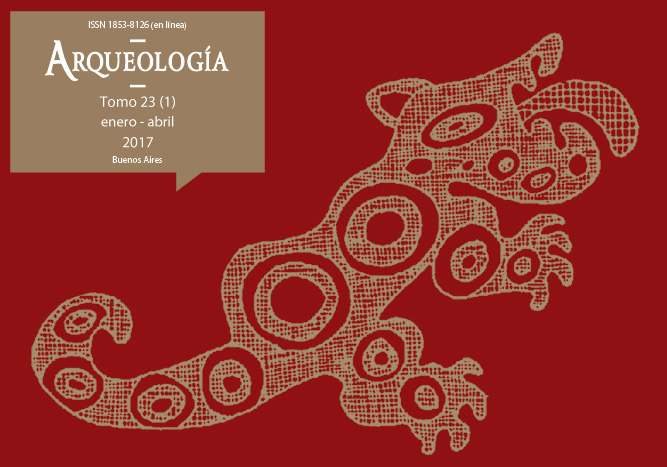Ceramic pastes and sand samples: Petrographic comparison and approach to raw materials procurement in the southern Pozuelos basin (Jujuy, Argentina)
Keywords:
Ceramic pastes, Raw material, Jujuy Puna, Petrography, Late Period, Colonial Period
Abstract
With the aim of undertaking a rst assessment of ceramic raw material procurement in the southern Pozuelos Basin, we present petrographic comparisons between ceramic pastes, analyzed in previous contributions, and sand samples from the study area. e samples were prepared and studied using a binocular magnifying glass, as well as under a petrographic microscope, taking into consideration similar elements to those observed on the ceramic pastes. e geological literature for the study area was also reviewed. Results allow us to suggest that a set of ceramic paste groups with related compositions, were manufactured using local raw materials. is was done on the similarities observed in the petrographic characteristics of their inclusions, and those of the sand particles. Another set, related to the Yavi style, was probably non-local to the southern Pozuelos Basin. Finally, a small set of paste groups belonged to the post- Hispanic period, and were probably non-local too.Downloads
Download data is not yet available.
How to Cite
Pérez Pieroni, M. J. (1). Ceramic pastes and sand samples: Petrographic comparison and approach to raw materials procurement in the southern Pozuelos basin (Jujuy, Argentina). Arqueología, 23(1), 11-25. https://doi.org/10.34096/arqueologia.t23.n1.3655
Section
Articles
Authors who publish in this journal agree to the following conditions:
- Authors retain copyright and yield to the journal right of first publication with the work registered with attribution license Creative Commons, which allows third parties to use the published always mentioning the authorship of the work and first publication in this magazine.
- Authors can make other independent and additional contractual arrangements for the non-exclusive distribution of the version of the article published in this issue (p. Eg., Inclusion in an institutional repository or publish it in a book), provided that clearly indicate that the work was published for the first time in this magazine.
- It allows and encourages the author / s to publish their work online (eg institutional or personal pages) before and during the process of revision and publication, as it can lead to productive exchanges and greater and more rapid dissemination of work published (See The Effect of Open Access).





(1)13.png)






1.jpg)
1.jpg)


13.png)
1.png)


(1)1.png)









